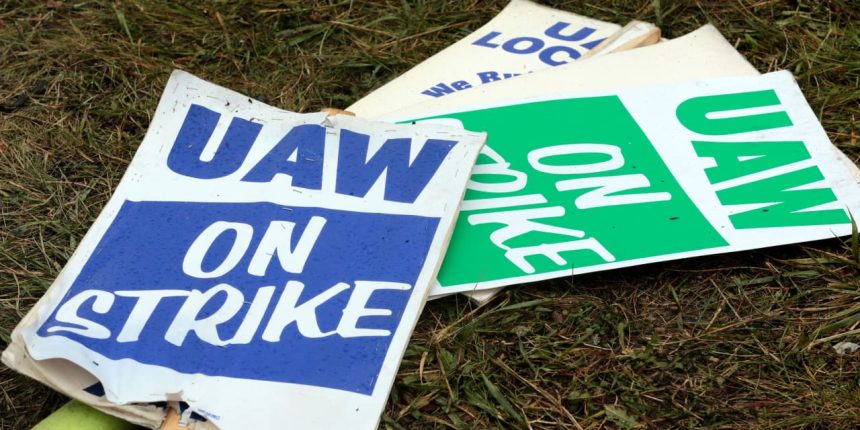As Yankees great Yogi Berra might say, it’s getting late early.
The United Auto Workers and the ‘Detroit Three’ auto makers have less than three days to negotiate a new labor contract. No deal most likely means a strike that could cost workers, the auto makers, and the U.S. economy billions. Some progress has been made, but investors aren’t betting on resolution just yet.
The Union has lowered its wage increase demands to about 30% over the life of the four-year contract, according to reports. That’s down from prior demands for increases north of 40%. The UAW didn’t immediately respond to a request for comment about its negotiating positions.
It’s a sign of movement. Headline wage increases from the auto makers,
Ford Motor
(ticker: F),
General Motors
(
GM
), and
Stellantis
(STLA), started out in the range of 10%. Those have moved up about 15%.
It’s difficult to compare proposals looking in from the outside. There are other lump-sum payments, cost of living adjustments, and wage-tier changes to consider.
Still, the gap between 15% and 30% looks wide on the surface. That might be one reason shares of GM and Ford aren’t moving on what should be good news. They stocks were both down roughly 0.3% in premarket trading Tuesday, while
S&P 500
and
Dow Jones Industrial Average
futures were both off about 0.2%.
Stellantis shares were up 1.2%, but that stock doesn’t always trade with the other two shares. It is a Europe-based company and its shares are held mainly by Europeans. Stellantis stock also trades for a lower multiple of earnings than either GM or Ford—another reason its shares don’t always trade like the other two.
Stellantis shares have been roughly flat over the past two months. GM and Ford shares are both down roughly 20%. Investors haven’t wanted to take the risk of a strike, preferring to wait to see how things turn out.
Wall Street’s views on a potential strike are mixed. Some analysts fear higher labor costs eating away at profitability. Others are more sanguine, believing negotiations are just part of the process and that wages were always set to go up after the high inflation of the past few years.
Both groups can still be right. The stocks have been stuck as investors wait. They could also go up after a deal is finally signed. Investors just want certainty on when that deal is coming as much as they want to know how much wages will rise.
There are between 140,000 and 150,000 UAW workers at the three auto makers. Total annual labor costs, based on estimates from the Federal Reserve, probably total some $20 billion.
That makes the difference between 15% wage increases and 30% increases worth up to roughly $3 billion over the life of the contract. That is only about 1% of combined North American sales for the trio of auto makers. It’s also about 6% of Wall Street’s projected 2024 combined operating profit.
Write to Al Root at [email protected]
Read the full article here




